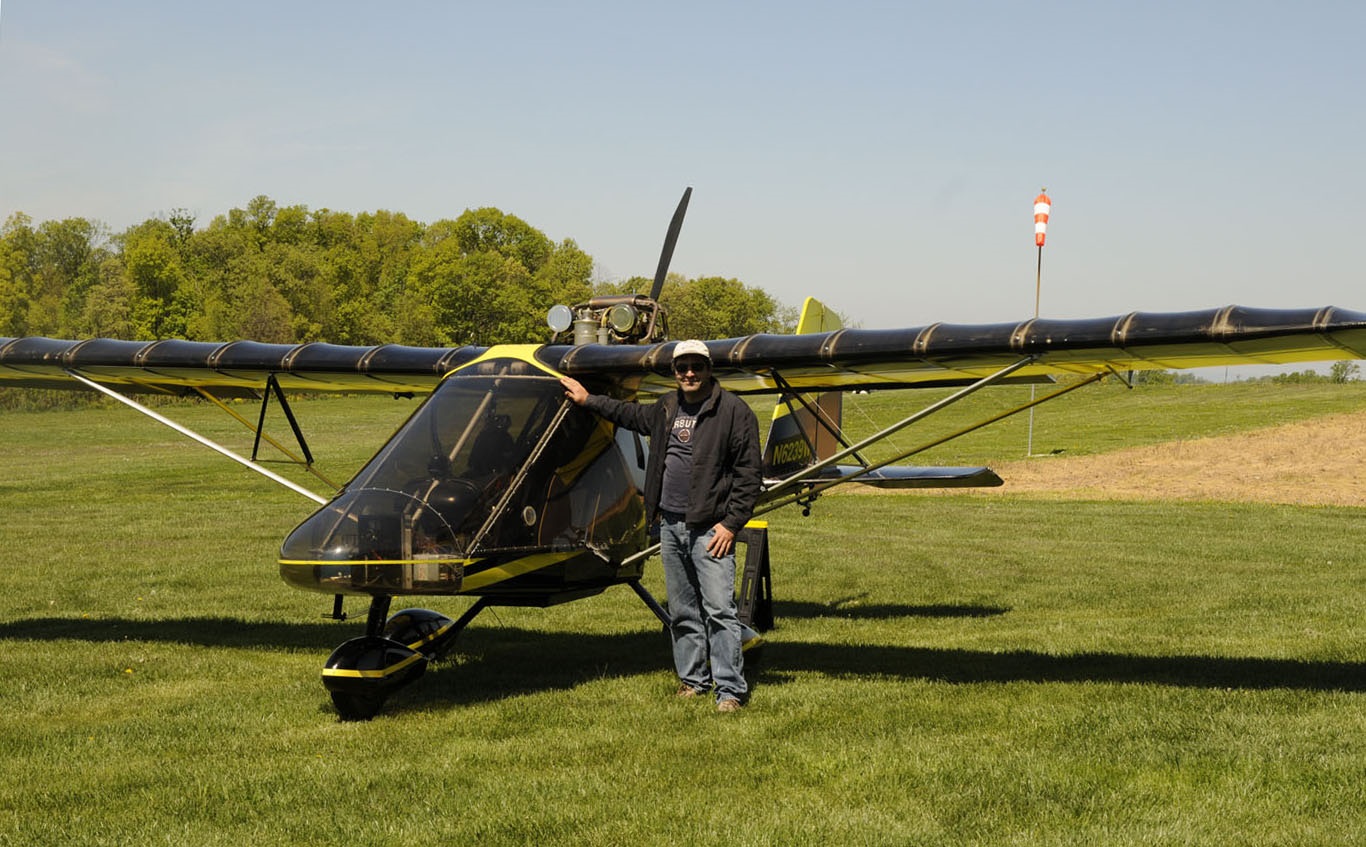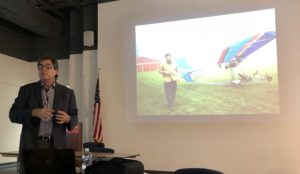Night at the Museum: Two Baltimore Chapters Transform After-hours at the National Electronics Museum into a Chance for Members to Experience the Beauty of Aerial Photography

Tucked away in Linthicum Heights, Maryland, the National Electronics Museum is an unassuming building on a small, side street a short distance from Baltimore airport. But once you enter the museum, you are struck by the exhibits paying tribute to electronic marvels throughout history.
The IEEE Baltimore Section has a close connection to the museum, hosting events and administrative meetings in the building, which turns the halls—regularly quiet after hours—into a hotbed of activity for the area’s electrical engineers.
On October 17, the Computer Society and Communications Society Baltimore chapters teamed up to bring aerial photographer Peter Stern to the National Electronics Museum for a presentation of his art. The 20 visitors stared in rapt attention as Mr. Stern took them on an aerial journey through the Mid-Atlantic region.
 Despite the fact that many of the locations Stern photographed were readily recognizable to those living in the area, the perspective he had taken imbued the scenes with a magical quality. The scars on the land left by a mine or quarry metamorphosed, as Stern noted in his lecture, “into a palette of oils you can use as paintings.” He explained that the dragline excavators scoop out the coal, and within that, delicate patterns emerge to fill out the artist’s canvas.
Despite the fact that many of the locations Stern photographed were readily recognizable to those living in the area, the perspective he had taken imbued the scenes with a magical quality. The scars on the land left by a mine or quarry metamorphosed, as Stern noted in his lecture, “into a palette of oils you can use as paintings.” He explained that the dragline excavators scoop out the coal, and within that, delicate patterns emerge to fill out the artist’s canvas.
In addition to the images of manmade structures, Stern also highlighted some of his pictures of the natural patterns formed by rivers and coastal shores. He named one particularly impressive photograph Luckdragon for its resemblance to Falkor, a dragon with a dog’s face, paws and fur, from the popular children’s fantasy story and film The Neverending Story. The image, composed of elements from the shore and underwater features of the Chesapeake Bay, depicts the gentle slopes of Falkor’s head and shoulders.
The artist noted that some of the natural formations he photographed, like Luckdragon, were ephemeral, appearing on one trip and at one moment, but then gone the next, due to erosion or changes in the sunlight. Stern explained that, with each flight and each photograph, he sought to create still images while traveling at a high rate of speed, “so that out of chaos, I am creating these Zen moments.”
The night’s event diverged from the usual technical gathering organized by chapters. In fact, had it not been for the audience’s technical bent and the resultant questions about the speaker’s memory card, or the use of Photoshop (which Stern uses, but not to apply any special effects to his photos), the audience might have escaped the meeting without reminders that the presentation was for electrical and electronics engineers.
Jeff Friedhoffer, IEEE Communications Society chapter chair and one of the organizers of the meeting, explained that with a more culturally focused topic, “We are able to get people to visit the chapters that we don’t usually see at technical talks.”
The challenge is reaching members and getting them more involved in the life of the chapter. People have limited time and often topics for technical talks appeal to subsets of the membership. But cultural events, such as the presentation on aerial photography, can have a broader reach, providing chairs an opportunity to meet their members and get a sense of what technical or non-technical talks will appeal to them in the future.
The Computer Society and Communication Society Baltimore chapter chairs were able to connect with the members that attended the event, whether before the talk over burgers and sodas, or afterwards when members congregated around the speaker with evermore questions.
Chapter chairs may want to take this event as an example of how they can use cultural activities to expand member involvement and give their constituencies a chance to come together. Moreover, they can use such cultural events as means of reaching out to larger groups of members for research and planning purposes. The more members a chair can talk to, the more he or she knows what to plan in the future.
If you have an event like this one, or have a method of reaching chapter members that you would like to share, send your article or idea for an article to chapters@computer.org.

Leave a Reply